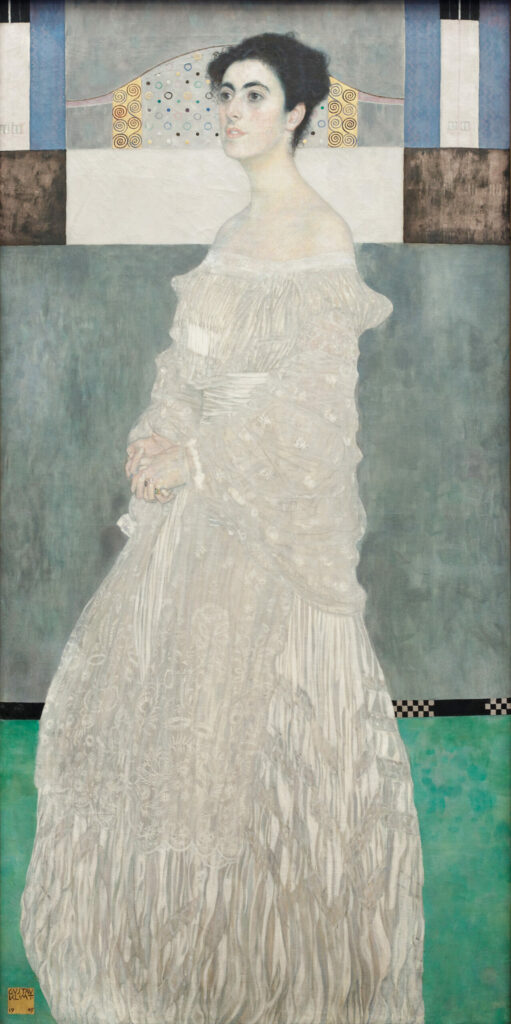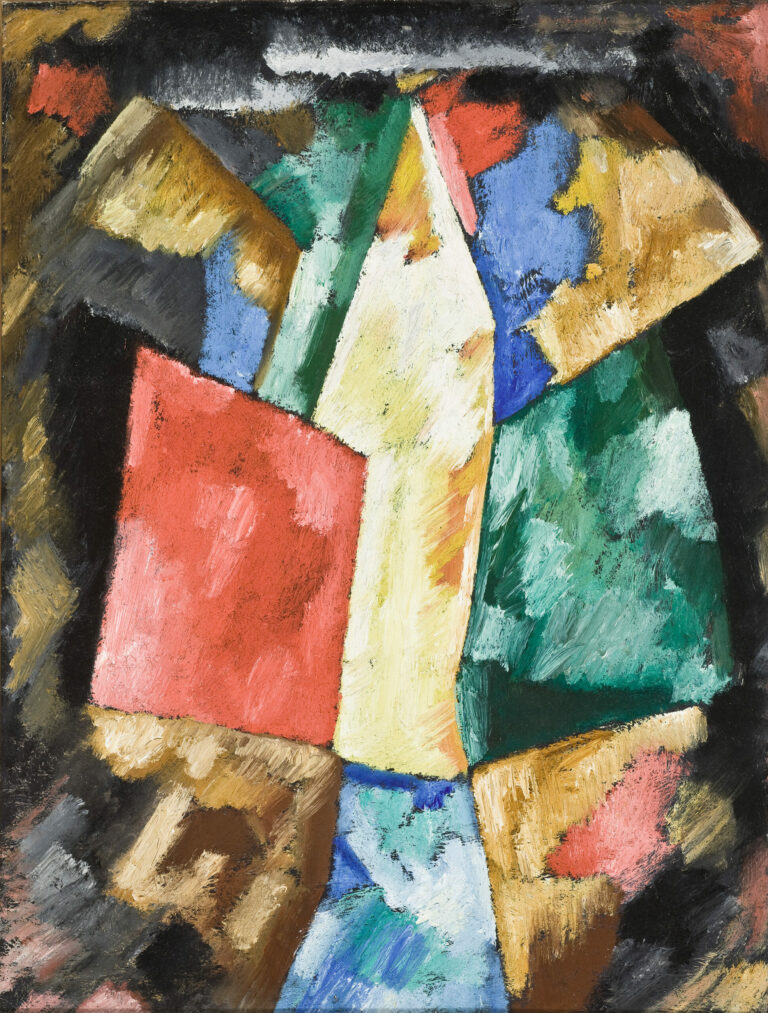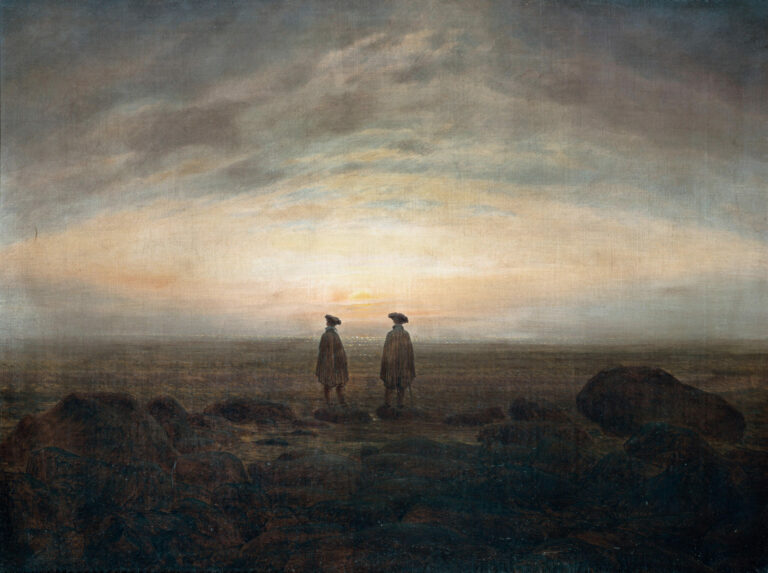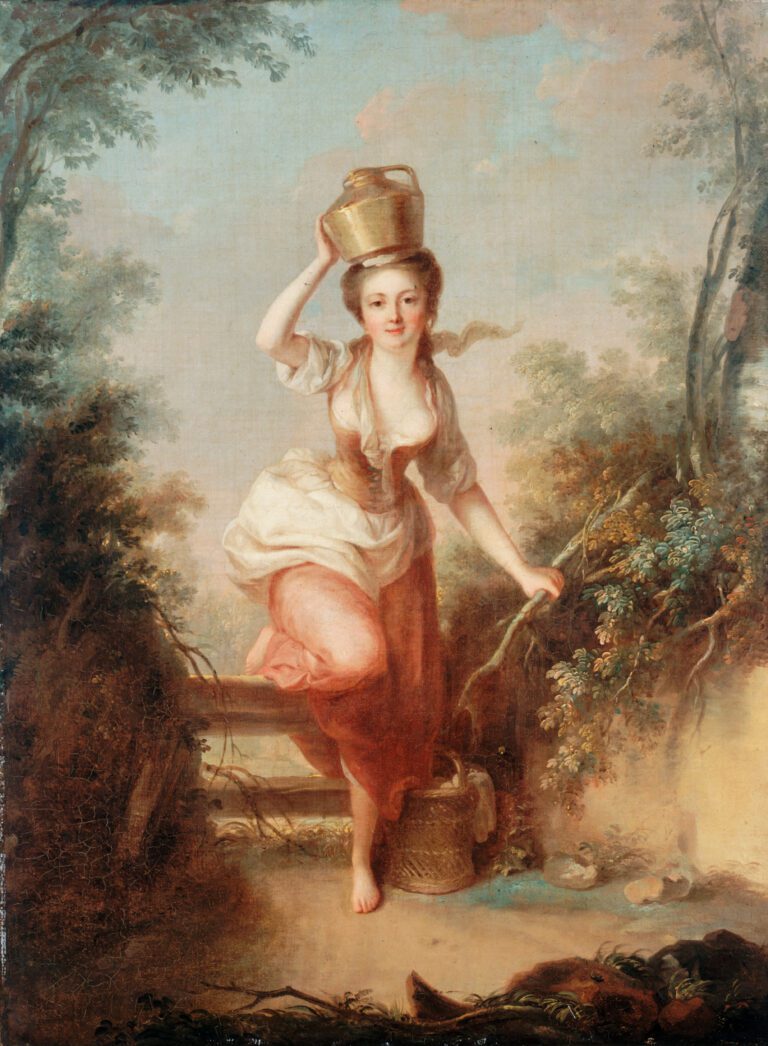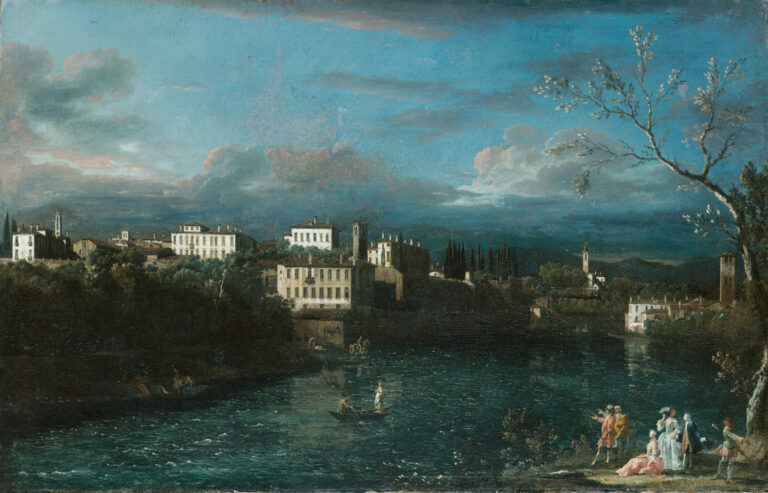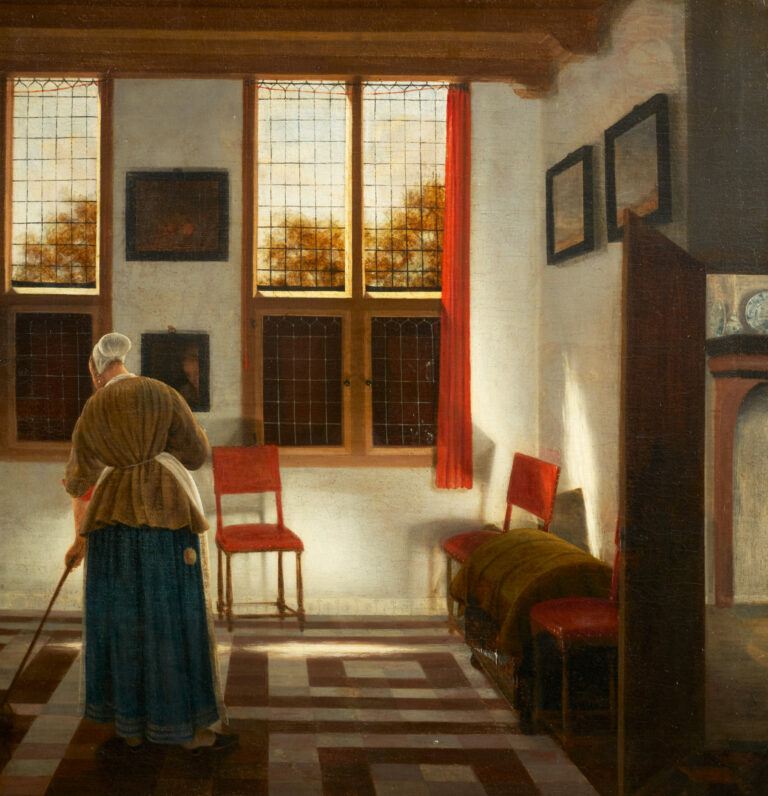Vienna, 1905. Margaret Stonborough-Wittgenstein poses in Gustav Klimt’s studio. She is twenty-two years old. The painter must immortalize the daughter of the powerful industrialist Karl Wittgenstein.
Between Modernity and Tradition
Margaret stands upright, hieratic, in a white moiré velvet dress created by the Wiener Werkstätte. The fabric captures the light, undulates, creates iridescent reflections. Embroidered motifs adorn the garment. They contrast with the pearlescent softness of the fabric. Klimt plays with visual tensions. The face and hands are treated naturalistically, almost photographically. The background fragments into geometric planes. The canvas oscillates between realism and abstraction. This duality defines Klimt’s style during this period.
A Portrait of the Viennese Upper Bourgeoisie
This painting belongs to a series of portraits commissioned by the Viennese elite. Karl Wittgenstein, Margaret’s father and patron of the Secession, financed this work. He had notably supported the construction of the Vienna Secession building. These portraits reflect a social class seeking to aestheticize everyday life. Margaret, a future philosopher and intellectual, would not, however, have appreciated this image. She reportedly relegated this portrait to the attic. The canvas freezes her in a decorative role that did not correspond to her independent personality.
Gustav Klimt, Master of the Secession
Gustav Klimt (1862-1918) dominated the Viennese art scene of the early 20th century. Co-founder of the Secession in 1897, he developed a unique ornamental language. His portraits of women blend psychological realism with sumptuous decoration.
💭 Between the beauty of a work and the truth of a person, which matters most?
About this work
- Margaret Stonborough-Wittgenstein, Gustav Klimt, 1905
- Oil on canvas, 179.8 x 90.5 cm
- Bavarian State Painting Collections – Neue Pinakothek, Munich
- https://www.sammlung.pinakothek.de/de/artwork/8MLvMXyxz3/gustav-klimt/margaret-stonborough-wittgenstein

